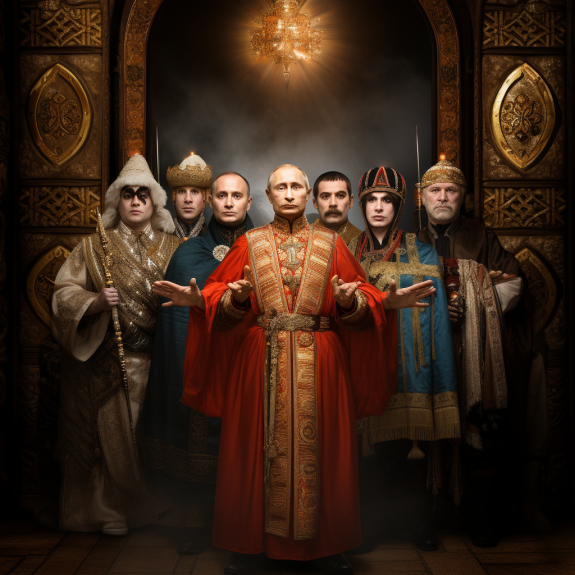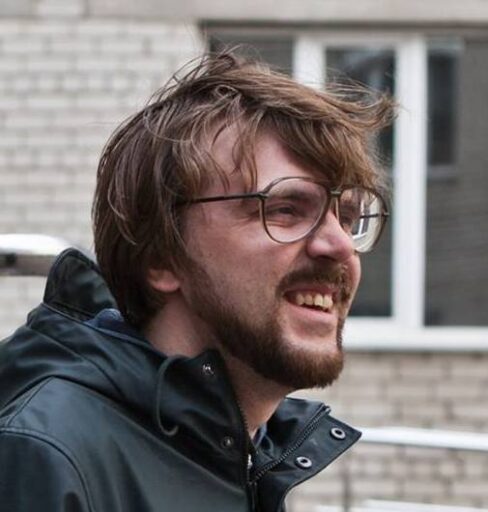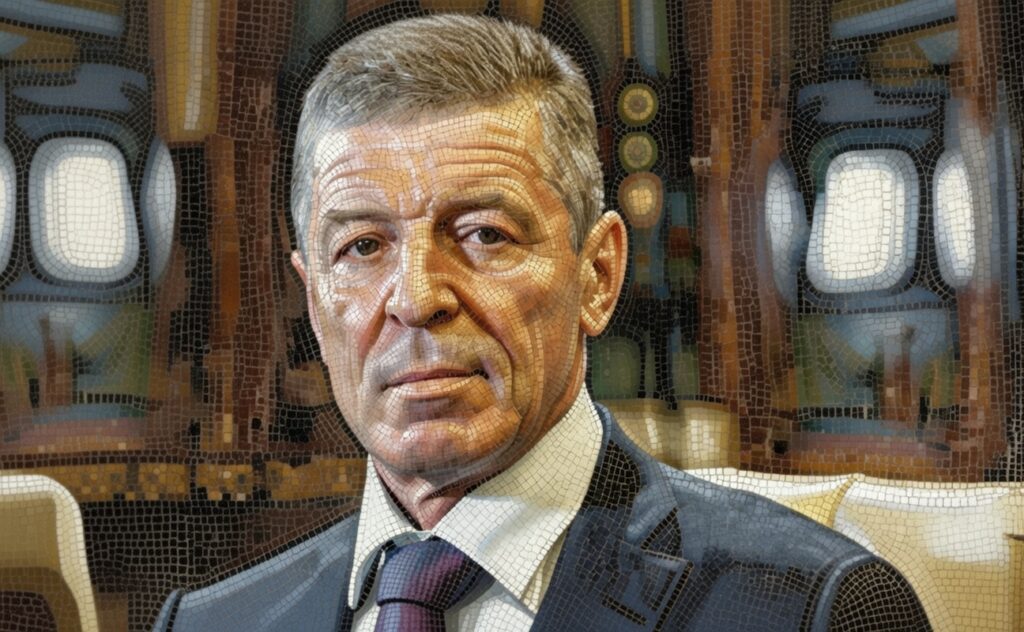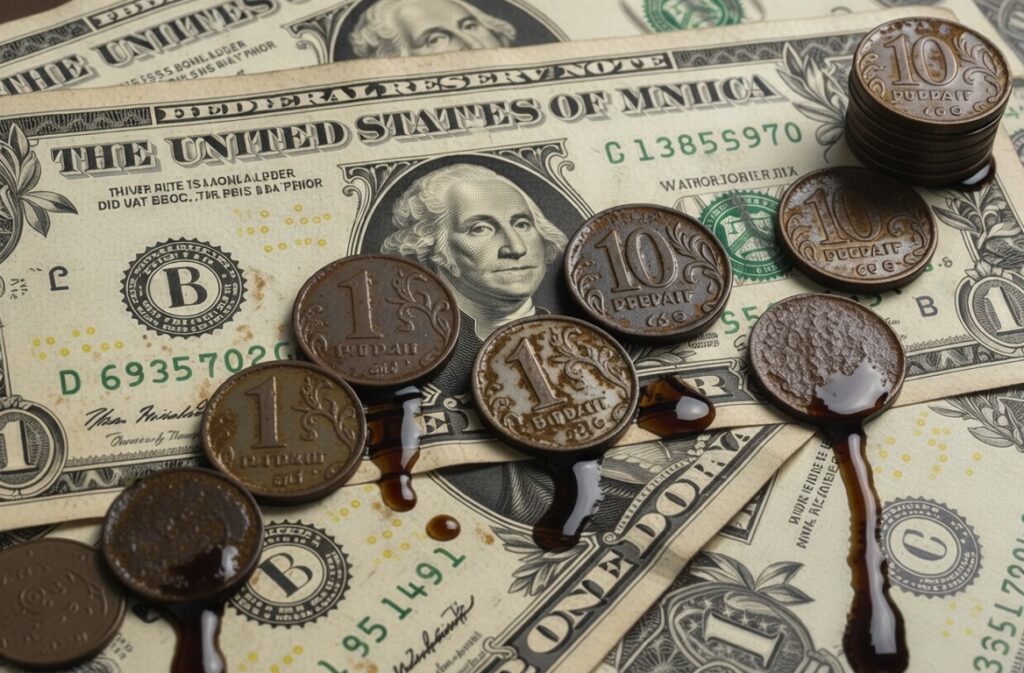At the end of October, former MGIMO professor Valery Solovei and his Telegram channel «SVR General» reported that Vladimir Putin had died. For several days afterwards, the Russian president did not appear in public, which led many people to take the information seriously, even though Solovei and the «SVR General» had been prophesying Putin’s death or resignation for several years now. Putin went public shortly after the anti-Semitic riots in Dagestan broke out, but conspiracy theorists have an explanation for his rreappearance, too: they claim that the president has long been resorting to doppelgangers and lookalikes to make public appearances in his stead when necessary. Many opposition-minded citizens have bought this theory and are now waiting for — at the very least — a serious split in the elites whose disagreements have always been mediated by Putin, or at worst — a coup d’état, because with the president’s death influential groups have nothing to fear and nothing to lose.
It may seem that such rumours must undermine public support for the government, even if Putin is still alive: concerned citizens, the reasoning goes, may see the real president as an imposter and withdraw their support of him. For now, however, Putin’s alleged «death» is working in his favour. Outlandish rumours, which in the eyes of the average person are definitely not confirmed (after all, here is Putin alive and well shown on TV or in the Kremlin-controlled Internet media and tabloids!), discredit any legitimate talk about the president’s health. It is obvious, though, that he is far from being well. Putin disappears from sight for long periods of time, and certain media drew on ample evidence to write about teams of doctors accompanying the Russian leader on his trips and hospital buildings being built near his residence. But now these stories are automatically discredited just like the rumours of Putin’s death and become the stuff of conspiracy narratives. Russians, who are not particularly savvy when it comes to verifying their sources of information, have been inoculated against any news of the president’s health problems. Putin’s voters — middle-aged and older people — remember well the so-called «Race of the Lafets» when several of the elderly leaders of the Communist Party of the Soviet Union died in quick succession. The triumph of gerontocracy led first to perestroika and then to the collapse of the Soviet system. It may also play a key role in the demise of Putin’s regime. For a while, the average Russian will not be so critical of the president’s age (and according to opinion polls, age is regarded as one of Putin’s main flaws). The professor and the «SVR General» who buried Putin have in fact made him immortal. Now it will be much harder for investigative journalists to prove to the average citizen that the president’s health is no longer what it used to be. And it is precisely these claims that could seriously undermine Putin’s ratings in the foreseeable future.
The Caucasus is in flames
Last weekend, a crowd of Dagestani residents stormed Makhachkala airport in search of Jews who had allegedly fled to the republic from Israel. Young men searched buses, cars, even police vans and planes on the runway, looking for Israelis. The authorities took a while to come to their senses and only managed to clear the airport several hours later, with rioters throwing stones at the police (one policeman was killed). In other North Caucasus republics, rallies were held with anti-Semitic slogans, and groups of local residents searched hotels for Jews. The Kremlin and Vladimir Putin personally predictably blamed Ukraine and Western intelligence services for the incident and once again called for national unity and cohesion. Despite the scale and uniqueness of the riots in Dagestan, the official Russian media paid little attention to what was happening in the North Caucasus. Actually, earlier this year the authorities reacted to the uprising of Yevgeny Prigozhin and the Wagnerites in a similar manner, only back then they did search for a Ukrainian-Western puppeteer behind the curtains. No public investigations, no resignations, and a muting of the issue in the information field — this is how the Kremlin downplays potentially dangerous public conflicts. Obviously, Putin and his entourage understand the danger of such situations: these force majeure events literally paralyse the power vertical for long periods of time. But instead of addressing and solving the problems, the Kremlin prefers to forget about them as quickly as possible.
It should be noted that the «Utro Dagestanа» Telegram channel, linked to former State Duma deputy Ilya Ponomarev, did indeed call for riots, but so did other channels and blogs. The calls fell on good soil. Mass demonstrations triggerred by various reasons have become somewhat of a trend in the Caucasus, with the region ranking among Russia’s most troubled ones. In the national republics, protests have been triggered by municipal problems, anti-COVID measures, mobilisation and even the construction of 5G masts. There are regular outbreaks of discontent, and the rumored arrival of «Israelis» has become one of such triggers. Claims that «the North Caucasus has never known anti-Semitism» are hardly true. Ethnographer Vadim Dymshits has described local antisemitic sentiments and outbursts dating back to the Soviet era and the 1990s. This hatred dovetails nicely with the conspiracy theories that are widespread in the region: it is not for nothing that the locals opposed lockdowns during the pandemics and are suspiscious of 5G masts. Conspiracy theories almost always mention a Zionist-controlled «world government» that is the source of all problems. Russian authorities benefit from such views: they absolve them of any responsibility for social hardship. But an anti-Semitic pogrom with a violent confrontation was clearly not part of the Kremlin’s plans. The whole experience of the protests in the Caucasus shows that the authorities cannot handle them: their main hope is that the problem will somehow magically disappear by itself.
The reasons for such protests are obviously social. The republics of the North Caucasian Federal District are poor and plagued by extreme economic and social inequality. Quality education is not equally available to all citizens. The population is obviously not satisfied with this state of affairs, but it is precisely because of the inequality, social stratification and unequal access to education that radical religious preachers and conspiracy theorists find their way into the minds of the discontented. As a result, social protest takes on obscurantist and repulsive forms. It cannot be ruled out that local clans dissatisfied with the Moscow appointees and «imported» governors spearhead and facilitate these outbursts. The head of Dagestan, Sergei Melikov with his background in security services had nothing to do with the region. The former general regularly reprimands local officials, violating unspoken clan laws and rules, which does little to inspire loyalty and optimism among the residents, since bureaucrats belong to these very clans that he disrespects.
It is both difficult and inconvenient for the Kremlin to really tackle the causes of social discontent in the Caucasus. Therefore, the presidential administration and the security forces turn a blind eye to the problems, hoping that they will disappear by themselves, especially since anti-Putin slogans are not heard at rallies in the national republics. In this sense, the influence of MMA fighters on Caucasian youth, who adhere to «traditional values» and aggressively impose them, is very telling. By and large, these athletes are «patriotic», which means that they support Putin and the head of Chechnya, Ramzan Kadyrov. But the stronger their influence, the more obvious it becomes that it has little in common with the conservatism and traditionalism of the Kremlin itself, and is far more radical.
It has been convenient for the federal centre to think that Caucasian ultra-traditionalists, conspiracy theorists and anti-Semites are understandable and predictable fellow travellers. The tactic of ignoring the protests has not failed so far, but sooner or later it will: social discontent is building up, and blowing off steam in the form of anti-Semitic actions does little to relieve it. Moreover, Muslim opinion leaders are demanding that the participants in the pogrom should not be punished, insisting that the Caucasus is a special region.
At some point, the streets of cities in the national republics may be filled with unhinged, uncontrollable crowds, and it will be very difficult for the security forces to deal with them. The aggressive nationalist and anti-Semitic rhetoric that has emerged in the Caucasian protests clearly contradicts the theory of peaceful coexistence of Russia’s different nationalities that is actively promoted by the Kremlin and Vladimir Putin personally. The «symphony of nations» has long been one of the Russian president’s main trump cards. For the nationalistically minded citizens, the head of state’s image was different: he was regarded as the pacifier of the Caucasus. The mass demonstrations in the national republics struck at both of these trump cards at the moment which is most inconvenient for Putin: in the days when the presidential election campaign had actually begun. Putin’s heresy about the supra-religious harmony among all of the denominations has failed the test of the radical Islamic conspiracy espoused by some inhabitants of the Caucasus. Their speeches can be described as one of the serious cracks in the «Putin’s consensus». This consensus is maintained as long as its participants have no significant disagreements; as soon as the position of one of the participating groups becomes a higher priority, the consensus collapses. Such situations are bound to become more frequent in the future. For example, the pogrom in Dagestan and the calls to exonerate its participants from responsibility have already displeased the authors of the popular Z-channels and thus their audience. They will certainly not be satisfied with the Kremlin’s strategy of «solving» a problem by shuffling it under the rug.










